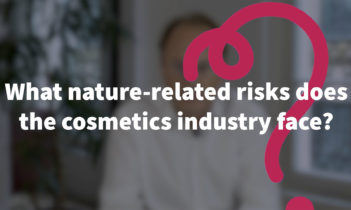
It’s time to bring sustainable products into the mainstream.
By now, every marketer can recite this conundrum: studies show that customers want more sustainable products, but customers don’t buy sustainable products. A 2023 BCG survey found that while 69% of respondents claimed they were concerned about sustainability in grocery retail, only 7% were actually buying more sustainable products.
So why is that?
The easy conclusion is that customers don’t back their convictions with action. But could there be other drivers in play? By now, there’s certainly no shortage of products that claim to be ecofriendly. Putting aside any cynicism from rampant greenwashing, let’s assume they’re at least more sustainable than their flagship brethren. So why don’t they move from store shelves into the shopping cart?
Is it really the customer? Or could the real issue be the marketing mix, also known as the 4Ps of product, price, promotion and placement.
Every product has an “Ideal Customer Profile” (ICP) in mind. The ICP is the archetype of the target market, but these archetypes can often calcify in the minds of marketers, taking on a level of permanency that can fall out of pace with changing times. Moreover, this myopia is exacerbated by concerns of cannibalizing sales from other product lines meant for other ICPs, or in the case of mass-market products, everyone else. In short, they don’t find new markets because they aren’t meant to.
Harvard Business Review explains that consumers often have negative associations with sustainable product options around quality, aesthetic and price. We’ve all seen these products. They live secluded, tucked away from their brighter counterparts in either an isolated section or on the bottom shelf. They have drab, minimalist labels. Despite costing more, they look inferior in quality. Whether they actually are is a mystery: most mainstream customers won’t try them to draw their own conclusions. They’re figuratively (and literally) not for them.
Does it really have to be this way?
Rather than having a sustainable product line, why not have a product line that’s sustainable? It may seem nuanced, but it’s time to bring sustainable products into the mainstream. Marketers must drive demand for them with the same exuberance as the tried-and-true flagship products for which customers can whistle every jingle or quote their favorite commercial. Or better yet, make the flagship lines themselves sustainable.
Start with the packaging
Sustainable packaging is a critical component of a product’s life cycle, impacting both environmental footprint and customer perception. Eco-friendly packaging solutions, crafted from recycled or biodegradable materials, significantly reduce waste and carbon emissions, aligning with the global move towards environmental responsibility and new packaging and packaging waste regulations. But the revolution doesn’t stop there. For sustainable packaging to be effectively un-niched, it must also focus on innovative design and functionality, ensuring not only environmental friendliness but also convenience and appeal for the consumer. In short, marketers need to decouple the association between “eco-friendly” and “drab” if they expect the mainstream customer to buy the product.
Though many companies have made strides to transition to sustainable packaging, ensuring their products are encased in materials that reflect their commitment to both quality and sustainability, there’s still a long way to go. Many consumers believe that the packaging from their favorite products is recyclable – they certainly go to the curb in the correct bin – but most of it still goes to a landfill, often offshore. In fact, a 2022 OECD report found that only 9% of plastic waste globally is recycled, while 22% is mismanaged.
Plastics are a particular problem, because even if containers have that recyclable symbol that has become so pervasive, it doesn’t necessarily mean they will take on new life. Most plastics undergo a decline in quality (downcycling), limiting their recyclability potential. To make matters more complicated, there are numerous kinds of plastics, each of which requires different recycling processes. Dealing with contaminants and implementing the right infrastructure are other drivers in the complexities of plastics recycling.
If companies simply must continue using plastics, they need to design their packaging to address these complexities or innovate to develop new solutions. Otherwise, the best option is to either minimize (or preferably dispense with) plastics altogether wherever possible.
Consider what’s on the label too
When faced with two choices between two equally attractive and well-promoted products, which brand gets chosen? All things are not equal in this regard. Of course, brand loyalty is a powerful consideration, but customers will scrutinize labels if they’re truly uncertain. With increasing consumer demand for more sustainable products, customers on the hunt for products that minimize harm to the planet are all the more likely.
Too often, labels will make a broad claim like, “Now, better for the planet!” or something along those lines, but the customer would be hard-pressed to derive any meaning. Maybe that worked a decade ago, but now customers are far savvier and want to know how and why they are better. Even more, soon the regulatory landscape will simply not allow it – the EU’s PPWR is establishing strict guidelines on labeling to provide a standardized framework for consumers to compare products’ environmentally friendliness.
Not having enough space to elucidate the several reasons why your brand’s product is indeed better for the planet is a good problem to have (and if so, congratulations). If that’s the case, or your brand is somewhere along the way to that goal, QR codes provide an excellent way to not only educate your customer but to engage with them as well.
Price aggressively
Customers shouldn’t have to pay more just to do the right thing, but many have to do just that. Why? Oftentimes it’s not because the sustainable version is more expensive to make, but rather that the product line lacks the scale to maintain a competitive price point. In other cases, it’s priced for what the traditional, eco-friendly ICP can afford. Or it could be a mixture of the two.
The mainstream sustainable product should have multiple ICPs at multiple socio-economic levels. Right now — in many cases, living sustainably is associated with privilege.
Moreover, this perpetuated inequality in the availability and affordability of sustainable products further exacerbates societal divisions. It sends an unintended message that sustainability is an exclusive club, only open to those who can afford the price of admission. The perpetuation of this notion not only harms the planet by limiting the adoption of sustainable products but also undermines the global movement towards universal environmental responsibility.
Consumer Goods companies have both an opportunity and a responsibility to put sustainable choices in front of the average consumer, not just those with disposable income. By ensuring that sustainable products are competitively priced and widely available, companies can stimulate increased demand, leading to larger-scale production and further cost reductions, creating a positive cycle of growing sustainability and affordability. Companies that can out-green and out-price will enhance their brand standing and break the competitive gridlock that brands so often face in a crowded field.
Beware of overconsumption
Are your marketing strategies driving market share or market size? According to the traditional marketing playbook, either is just fine, so long as the product is being sold. But from a sustainability perspective, be it social or environmental, that’s short-sighted.
Marketing strategies are tied to a desired outcome. For example, you can compete through a lower price, or perhaps you position your product to be of higher quality, so you don’t. Digital coupons can sway the buying decision on a commoditized product. These levers are exercised every day. The most effective strategies tend to be the ones that get the customer to stock up because, in doing so, you can be sure of two things: 1) They bought your product with their need more than amply met, and 2) they won’t be buying your competitors’ products any time soon.
The sustainability risk arises if you’re encouraging customers to purchase more than they can realistically consume. This is particularly problematic with perishable products, leading to waste of the excess. Alternately, there’s the risk of driving irresponsible consumption, because a customer’s unlikely to use a product sparingly if it’s in short supply.
Quality matters
A large misconception is that there’s a tradeoff between sustainability and product quality. This assumption has hindered the broader acceptance of sustainable goods beyond niche markets.
Though a certain ICP or target market would gladly trade some quality for peace of mind, when you broaden outside of that niche, that may not hold true. In fact, it’s highly likely it doesn’t. If the product doesn’t work, or doesn’t taste/smell good (depending on what it is), then why would anyone buy it? This isn’t news. What might be news is that sustainable products don’t have to be inferior in quality.
Depending on the scope of marketing in each organization, how a product’s made might be out of the CMO’s direct control, but they’re still the vanguard of what most customers want and can advocate for it. A 2023 BCG article encourages business decision makers to utilize innovation to activate lasting consumer behaviors; by removing other barriers to address the core needs of consumers, companies can sell products that resonate with potential buyers while also pushing their sustainability agenda.
Given the range of consumer goods, be it fashion, food, or cosmetics, innovation can take on many different meanings. It involves reimagining every aspect of the product, including its functionality, durability and aesthetics. Ultimately, though, it’s about making quality goods that customers want.
And that’s always been true. Sustainable products shouldn’t be the exception; in fact, they should strive to surpass the standards set by traditional counterparts. When consumers realize that they don’t have to compromise on quality to make sustainable choices, it becomes a more attractive option for the masses.
In essence, prioritizing quality in sustainable products meets market demands, sets new market standards and reshapes consumer perceptions around sustainable goods. By delivering sustainable, quality products, companies can truly make sustainability accessible to larger markets and drive widespread adoption of their brand.
Latest resources

4 nature-related risks facing the cosmetics industry
Quantis' Emmanuel Hembert outlines the nature risks facing the future of the cosmetics industry.

How digitalization is unlocking a new era of sustainability in fashion...
While digitalization alone doesn’t guarantee perfect accuracy, it plays a crucial role in many ways like fostering more meaningful supplier engagement, boosting data quality and...

Why an environmental sustainability strategy without nature is incomplete
Businesses have an essential role to play in reversing the trend of nature loss — and a lot to lose from inaction.

